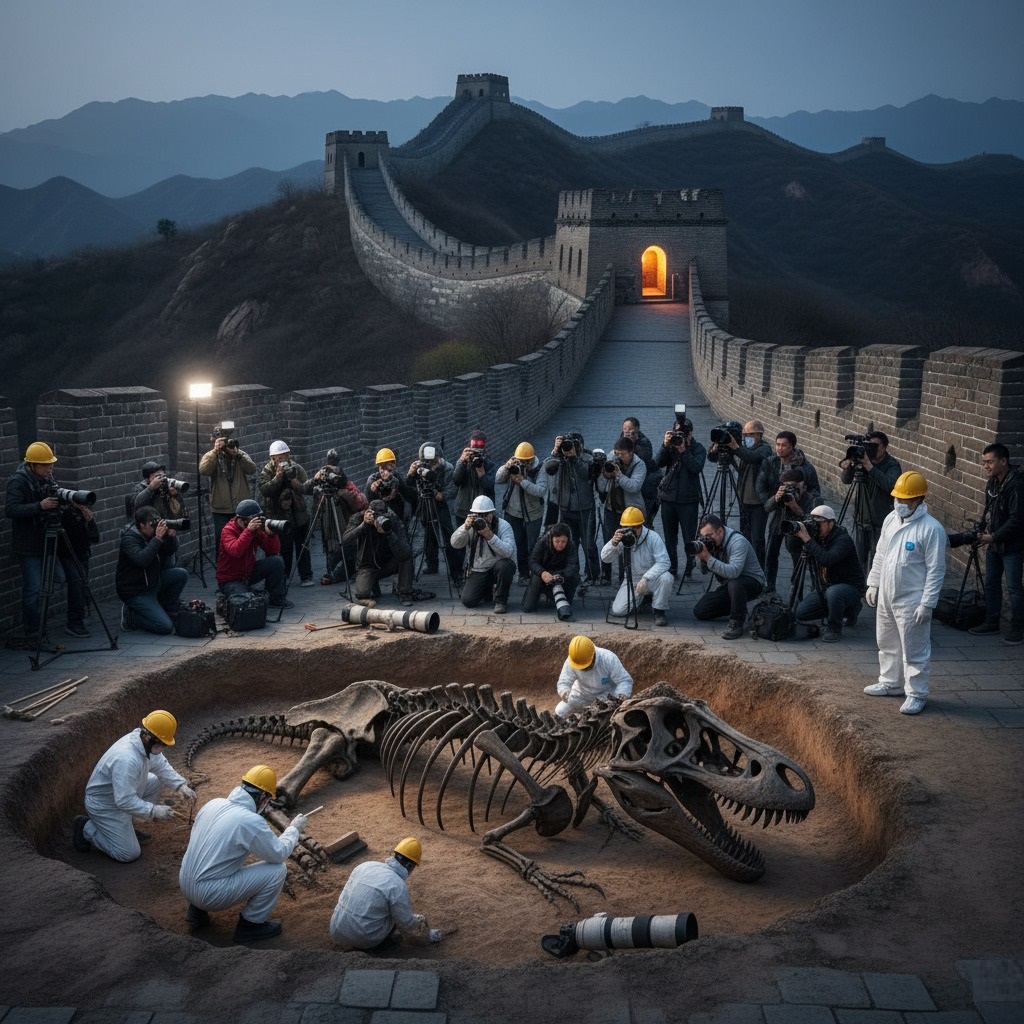Unearthing Giants: Dinosaur Discovery at the Great Wall of China

The year was 2047, and Dr. Aris Thorne, a paleontologist whose career had been spent sifting through the dusty plains of Mongolia, never imagined his greatest discovery would come from such an iconic, man-made wonder. The Chinese government, in a groundbreaking initiative to map previously un-excavated sections of the Great Wall, had inadvertently stumbled upon something far older than any brick or battlements.
It began subtly enough. A routine geological survey near the Simatai section, known for its rugged beauty and steep inclines, registered an anomalous density deep beneath a seldom-trod watchtower. Initial thoughts leaned towards a hidden cache of ancient armaments or perhaps an undiscovered tomb. What they found, however, dwarfed any human artifact.
Dr. Thorne received the call in the dead of night, a terse message from Beijing: “Anomaly confirmed. Large organic structure. Urgently require your expertise.” Within 48 hours, he was standing on the ancient stones of the Great Wall, overlooking a makeshift excavation site that buzzed with a controlled chaos. As dusk settled, painting the vast sky in hues of deep blue and purple, the full scope of the discovery began to emerge.
In a carefully dug pit, bathed in the gentle glow of portable floodlights, lay the partial skeleton of what appeared to be a massive theropod, possibly a previously unknown species. Its formidable skull, with dagger-like teeth still intact, peered out from the earth as if awakening from a 70-million-year slumber. Ribs arced majestically, and the powerful femur hinted at a creature of immense scale.
Dr. Thorne, donned in a pristine white hazmat suit, moved with a reverence that bordered on awe. His team, a blend of international paleontologists and seasoned Chinese archaeologists, meticulously brushed away layers of loess and ancient silt. Every bone was a testament to time, a whisper from an era when colossal beasts roamed this very landscape, long before emperors envisioned walls, and even before the first hominids walked the Earth.
The discovery sent shockwaves across the globe. News crews, photographers, and documentary teams converged, their long lenses and powerful flashes illuminating the scene like a constellation of man-made stars. From kneeling videographers capturing every delicate brushstroke to journalists dictating breathless reports into their microphones, the world watched. The iconic silhouette of the Great Wall, its watchtowers now casting long, dramatic shadows, served as an unparalleled backdrop – a silent sentinel to two vastly different epochs colliding.
“It’s… humbling,” Dr. Thorne murmured to his lead Chinese counterpart, Dr. Li Wei, as they overlooked the colossal fossil. “To think this creature roamed here, beneath where a civilization would one day build one of the greatest structures ever conceived. It redefines our understanding of this land’s ancient past.”
Dr. Li, a stoic woman with eyes that held the wisdom of countless archaeological digs, simply nodded. “The Wall protected human history,” she said, her voice soft but firm. “Now, it protects something far older. A guardian of giants.”
As the last rays of sunlight faded, and the watchtower in the mid-ground glowed warmly, casting a golden light through its ancient arches, the scene was one of profound significance. The Great Wall of China, a monument to human endeavor and time, had opened its embrace to reveal another, far grander chapter of Earth’s story, reminding humanity that even our most enduring legacies are but fleeting moments in the grand geological tapestry of time.
